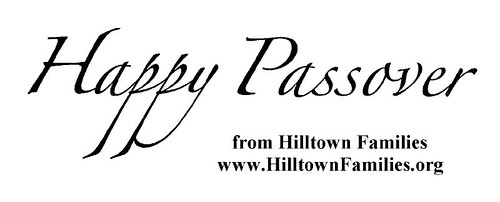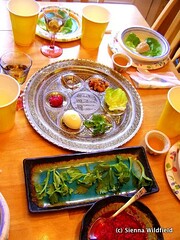History, Celebration and Symbolism of Passover
Passover 2009
In 2009, Passover is observed from sundown April 8 to sundown April 15. Annually, Passover starts at sundown on the 15th day of the Jewish lunar month Nissan, which typically falls in March or April. The year 2009 translates to the year 5769 on the Jewish calendar.
Passover is an eight-day religious celebration symbolizing the Jewish people’s freedom from slavery and exile in Egypt in 1300 BCE. It is a celebration not just of a specific historical event, but of freedom itself. It is also a time of thanksgiving, spring renewal, and family and community solidarity.
Passover also is known as “Pesach,” a Hebrew word pronounced “pay-sock,” which means “to pass over” or “to spare.”
HISTORY OF PASSOVER
God commanded Moses to lead the Israelites out of slavery in Egypt, but when Moses asked the ruling pharaoh to free the people, the pharaoh refused.
God then sent 10 plagues upon the Egyptians, the last of which was a vow to send an angel of the Lord to every Egyptian home to kill the first-born son. Israelites were told to mark their doors with the blood of slaughtered lambs so that the plague would “pass over” them and spare their sons.
After the plague, the pharaoh ordered the Israelites to leave Egypt immediately. The Jewish people left in such haste that the bread they were baking had no time to rise. They packed the dough to take with them on their journey, and as they crossed the desert, they baked the dough in the hot sun, which yielded hard crackers called matzos.
The pharaoh later changed his mind and sent his army to capture the Israelites. Trapped at the shore of the Red Sea, Moses called on God’s power to part the sea. The Israelites passed through before the sea crashed in and drowned the army.
Hallmark produced its first Passover cards during the 1940s.
CELEBRATION
Passover is one of the most significant observances on the Jewish calendar, and individuals of the Jewish faith worldwide celebrate with family gatherings and traditional Seder meals.
Before the Passover celebration begins, participants thoroughly prepare their homes. Every trace of leavened food (anything made with yeast) – breads, cakes, crackers – must be removed from the home. Special dishes, pots, pans and silverware are used only during this holiday.
The “Seder,” from a Hebrew word meaning “order,” ushers in the eight-day Passover holiday. Special foods are prepared for modern-day Seder dinners, each a symbol for the original Passover dinner (see photo above):
- Matzos, the unleavened bread, wrapped in a special cloth to recall the Jewish ancestors who fled from Egypt in haste.
- Bitter herbs, such as horseradish, to recall the bitterness of life in slavery in Egypt.
- Charoset, a paste of crushed apples, nuts, cinnamon and wine, to represent the mortar that Jewish slaves used to build the pharaoh’s cities.
- The roasted shank bone of a lamb, which is viewed but not eaten, represents the lambs slaughtered so that their blood could be used to mark the Israelite homes and protect them from the plague.
- Sprigs of parsley, symbolizing springtime, which are dipped into salt water to represent the tears shed in anguish by the Israelites.
- A roasted egg, a symbol of life and renewal.
At the ceremonial dinners, which are held on the first two nights of Passover, the Seder foods are eaten in a prescribed order with appropriate explanation of their meaning, recitation of blessings and discussion.
During the main course of the Seder meal, four glasses of wine are consumed with proper blessings. An extra glass of wine is poured “for Elijah” the prophet, who is assumed to be an invisible guest at the meal.
One of the most important traditions of Passover is the retelling of the story of the Israelites’ Exodus from Egypt. A book known as the “Haggadah,” a Hebrew word that means “telling” or “narrative,” contains this story, as well as songs, blessings and prayers to commemorate the occasion and to celebrate Jewish history.
During the holiday week, daily synagogue readings recount the journey from Egypt, including the crossing of the Red Sea. The readings conclude with a passage from Isaiah describing the Messianic era, which is often regarded in Jewish tradition as the “Passover of the future.”
Children play an important role in the Passover celebration. During the Seder dinner, the youngest child at the table generally asks four questions, the answers to which explain “why this night is different from all other nights.” The Passover observance offers an important opportunity to instill and reinforce Jewish traditions, customs and tenets of the faith in young people.
“Next year in Jerusalem” is a phrase often used to bring the Seder to a close. It is an expression of hope that the Messiah will come in the next year, that the Temple will be rebuilt, and that Jews will come together in Jerusalem once again. Israelites used to make pilgrimages to Jerusalem for three religious occasions, one of which was Passover.

Subscribe to Hilltown Families
Source: Hallmark Archives
 Hilltown Families
Hilltown Families 






























Our MA library system has many Passover titles to borrow. Click here to review their selection.